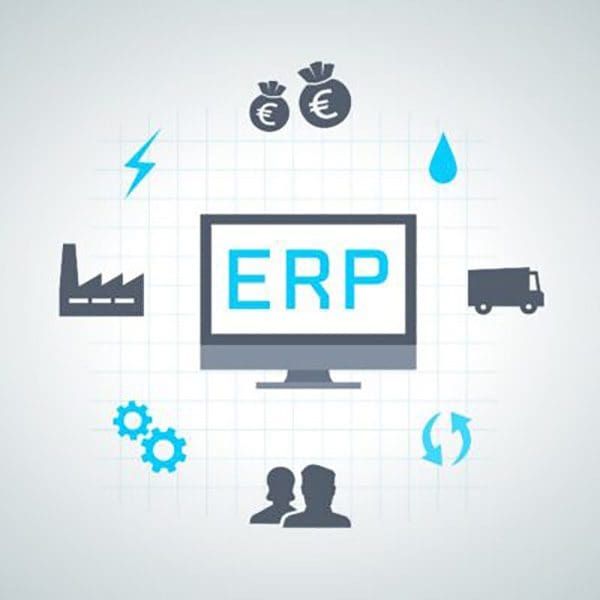3 Common Mistakes that Lead to an ERP Implementation Failure

So. You’ve decided to implement a new ERP system. Fantastic! Implementing a new ERP system comes with an abundance of benefits; improved efficiency, transparent reporting, total visibility, and most importantly, scalability. It’s easy to see the benefits of a new ERP system, however, just because you’ve closed the deal with your ERP provider doesn’t necessarily mean you’re home-free. Today we’ll highlight some of the most common pitfalls we see when companies are adopting a new system and what you can do to avoid them.
Assess Implementation Time
One of the most common mistakes we see from our clients when implementing an ERP is a lack of internal time and resources dedicated. All too often we see clients get excited about their new ERP (and rightfully so) without truly recognizing how much time and effort it will take to get the system live. Depending on your situation, implementing a new ERP should take roughly 3-4 months, however, if you’re unprepared (or you have more complexity in your business), it can take 6 months or more. A lack of preparation creates not only a delayed implementation but can also become very disruptive to your entire team. If your organization isn’t properly prepared, the implementation can distract your team, resulting in missed deadlines, misinformation, and an all-around general misery from the slowed implementation.
This leaves the question of “how can you better prepare your team and resources for a successful implementation?” For starters, we advise working with a professional implementation team, like Bridgepoint Consulting. Working with an ERP implementation specialist takes out a lot of the headaches and while there is still a considerable amount of time required from your team, you can be confident knowing that the job will be completed efficiently, effectively, and most importantly, in a manner that allows your organization to scale.
Alternatively, if you decide to have your team implement your ERP, then you need to be properly prepared. You’ll need to understand what you want the implementation to accomplish as well as all the nuances that come with integrating the new system. If you decide to take this route, we recommend assigning an internal project manager who is a subject matter expert to take point and drive the implementation forward. Be sure to do your research prior to onboarding to assess your options and requirements for a successful implementation.
Data Migration Needs
Ah the joys of data migration! Selecting, preparing, extracting, and transforming data into an acceptable format for your new ERP is often easier said than done. It’s a challenge to get your data out of your old system, validate it, and get it into your new ERP. In our 20+ years of working with ERPs, this is one of the most common areas we see teams struggle with. Prior to preparing and extracting your data, be sure to decide how much of your old data you want in your new ERP system.
When an organization decides to implement an ERP, it usually means one of two things; either the organization has outgrown its existing system, or there is a problem with it. Whatever the reason, keep in mind that if there is an issue in your current system, you must resolve these issues before moving to a new system. As they say, “garbage in is garbage out” and a newly implemented system won’t operate the way you need it to if you haven’t remedied outstanding problems. As you begin your data migration, we propose a “less-is-more” mentality. Identify your key attributes, determine if you have complete data for all records, then move only the most critical and complete pieces. You’ll need to dedicate a Subject Matter Expert (SME) to assess the quality of detail you want in the new system. If your SME is managing this process for the first time, it can be challenging and we suggest anticipating additional time to accomplish this or bring in a third-party provider to help your team understand the entire scope of work.
Decision Maker Involvement
Your decision maker’s involvement is often an overlooked element of an ERP implementation. We frequently see decision-makers involved at the beginning of the process (i.e. CFO, CIO) but fail to participate during the implementation phase of a project. This comes as no fault to the decision-maker as it’s usually something that isn’t realized. Implementing a new ERP is an extensive undertaking and we recommend decision-makers remain active participants throughout the duration of the onboarding process.
To be more involved in your ERP implementation, we suggest bringing in the appropriate team members as soon as possible. Leadership and decision-makers are often heavily involved during the sales process however, once the deal is closed, they move on and handoff to an internal employee. This leaves a lot of gaps for your internal employees, particularly in understanding the ins and outs of the ERP. If you’re a decision-maker, bring in the appropriate staff members during the sales process. They’ll likely have additional questions about the ERP which will allow your team to better assess your implementation procedure. Getting answers to these questions sooner rather than later will also help you realize the complete scope of work and set your team up for a successful implementation. As we mentioned before, implementing an ERP is a BIG DEAL and can be both a disruptive and time-consuming process. By bringing in the appropriate team members early, you can better understand time commitments, implementation timing (i.e. busy season vs off-season), and whether or not your team has the bandwidth and expertise to implement your new ERP.
Additionally, we propose establishing a communication cadence between leadership and those team members (or a third party) responsible for your ERP implementation. There are many important decisions that are needed with an ERP implementation, and it’s crucial for leadership to be an active participant in these decisions. This might seem like common sense but, we see decision-makers failing to show up for these conversations time and time again. Take a proactive approach by establishing a communication cadence to help your decision-makers commit. This can best be done by empowering an internal person to take charge and own the project with an established roadmap to follow. Once a roadmap is in place, we recommend establishing a weekly update or check-in to communicate project progress.
Summary
Implementing a new ERP system can certainly be a daunting task but we understand the need to do so in order to scale your growth. As you begin to prepare for your ERP implementation, be sure to keep scalability at the core of your mentality. With scalability top of mind, you can ask better questions, understand the necessary personal, assess time commitments, and recognize data migration requirements that will significantly reduce your chances of ERP implementation failure. With an understanding and proper expectations from the get-go, you’ll be more prepared for a successful ERP implementation the first time around.
Bridgepoint Consulting offers ERP selection assistance and ERP implementation for a variety of platforms like NetSuite and other leading providers. If you’re contemplating hiring a 3rd party provider, we encourage you to start the conversation with us and assess your options.
By Nora Foster
Nora Foster is a Director in Bridgepoint’s Financial Consulting practice and is part of the Atlanta management team. Nora works with clients on their financial, operational and technical accounting needs, and brings decades of experience in managing both private and public accounting and finance organizations.




